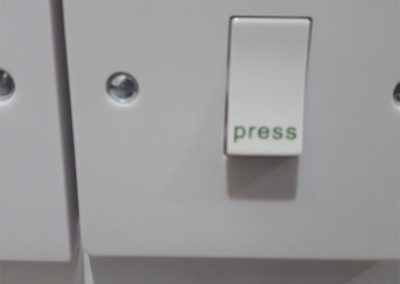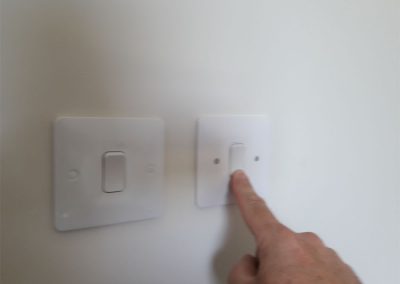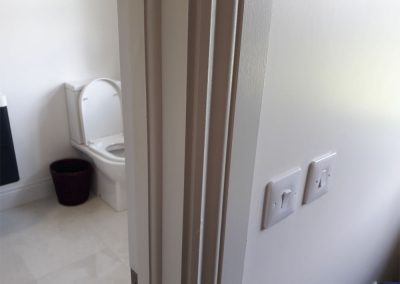Heat Recovery Ventilation
Reduce your heating costs by up to 70%!
Why Heat Recovery Ventilation?
- Health benefits of better air quality Reduces symptoms for asthma and allergy sufferers
- No condensation on windows, no fungal or mould growth in bathrooms and bedrooms
- Reduce your heating costs by up to 70%
- Top quality Vent-Axia ventilation systems
What is Heat Recovery Ventilation?
(HRV) Heat Recovery Ventilation (MVHR) provides fresh air and improved climate control, while also saving energy by reducing the heating requirements.
Stale moist air will be extracted from the ‘wet areas’ of the home, these are generally Bathrooms, Utility rooms and kitchen.
Before this warm stale air is dumped outside it passes through the heat exchanger which will transfer its heat to the new fresh air, the tempered fresh air is then piped into the living areas of the home.
It does not recycle polluted air unlike an air conditioning unit which cools air by refrigerant technology recycling polluted air back to the room consuming a lot of electricity
Incoming fresh air and outgoing stale air never mix in the heat recovery process; they simply pass in separate channels in the the heat exchanger, allowing an exchange of heat through conduction.
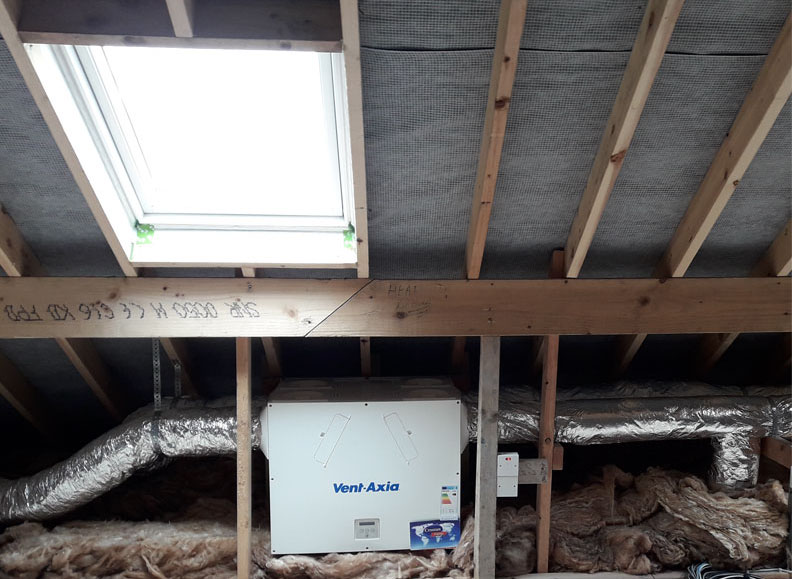
HRV & Airtightness Galleries
Call 087 98 98 434
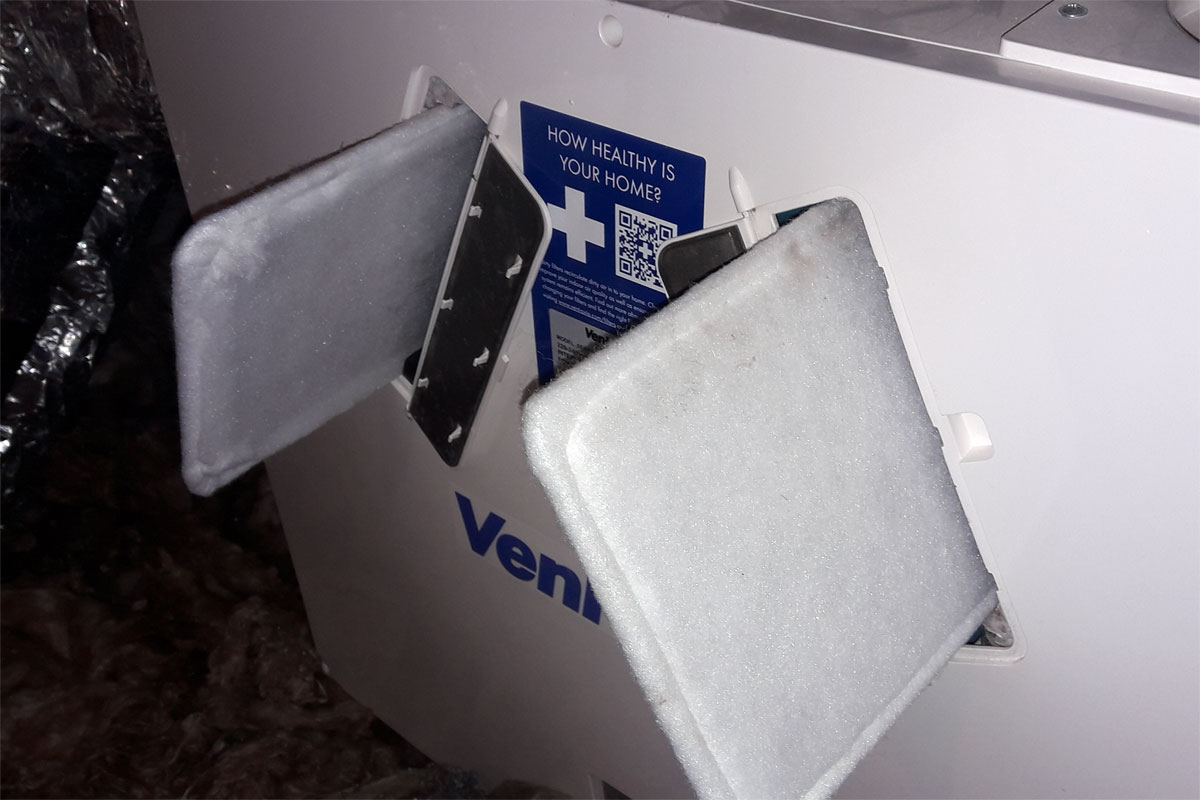
Don’t Forget the Filters
We recommend that the Heat Recovery Ventilation system is serviced by Crossan Energy once a year as filters will gradually become clogged as the year progresses and this will affect the efficiency of the unit.
- Health benefits of better air quality Reduces symptoms for asthma and allergy sufferers
- No condensation on windows, no fungal or mould growth in bathrooms and bedrooms
- Removes bad odours
- No extract fans or ‘hole in the wall’ vents that allow cold damp drafts in and heat to escape
- Recovers heat that would otherwise be lost to extract ventilation
- Reduce your heating costs by up to 70%.
- nZEB and current Irish Building Regulations 2019 part L & F compliant
- Better BER- Enhanced house value
- Summer bypass contributes to cooling homes during the summer
- Top quality Vent-Axia heat exchangers.
- Get that summer fresh air feeling all year round
Heat Recovery Ventilation FAQ
How much does Heat Recovery Ventilation cost to run?
The Heat Recovery Ventilation system is extremely efficient models are rated as high as 94%
Although it requires the operation of a fan on a continual basis, the energy recovered from the inside air is many times that of the energy required for the fan.
The cost to run depends on the size of the house. As a larger house requires a bigger Heat Recovery Ventilation unit with higher fan consumption.
A 260 m2 house would cost about to €50 per year to run
How long does Heat Recovery Ventilation Payback take?
Heat Recovery Ventilation systems primary function is to ventilate airtight homes and in doing so recovers heat that would otherwise be lost to extract ventilation
Payback should be measured in the health benefits to the residents as well as return on investment which can be as little as 3 years depending on how building air tightness.
Why is Heat Recovery Ventilation suitable for the Irish climate?
Yes, Ireland’s climate is with mild, humid and changeable with abundant rainfall and a lack of temperature extremes
In winter severe cold weather is uncommon,
However temperatures are lower with wind driven rain & air moisture between 70 to 100%.
The wind chill factor and damp air make it feel much colder
Homes have become better insulated and more airtight to reduce heat loss and drafts But condensation issues have got worse as homes are under ventilated
How does Heat Recovery Ventilation improve Thermal Comfort?
Recovers heat that would otherwise be lost to extract ventilation
There is no need to install ‘hole in the wall’ trickle vents, window vents and extract fans (Bathrooms, En suites Utility & Kitchen) that allow cold damp drafts in and heat to escape
With Heat Recovery Ventilation in winter there is no need to open windows or turn on extract fans to remove bad smells, that damp felling is gone as humidity is automatically reduced and the summer bypass helps to cool on hot summer nights.
Get that Summer fresh air feeling all year round
Do I still need extract fans, window & wall vents with Heat Recovery Ventilation?
There is no need to install ‘hole in the wall’ trickle vents, window vents and extract fans (Bathrooms, En suites Utility & Kitchen) that allow cold damp drafts in and heat to escape
With Heat Recovery Ventilation in winter there is no need to open windows or turn on extract fans to remove bad smells, that damp felling is gone as humidity is automatically reduced below 70% and the summer bypass helps to cool on hot summer nights.
-
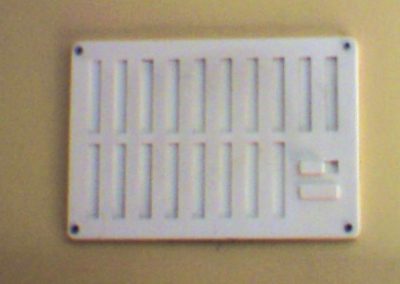
Drafts coming through room vent from outside
-
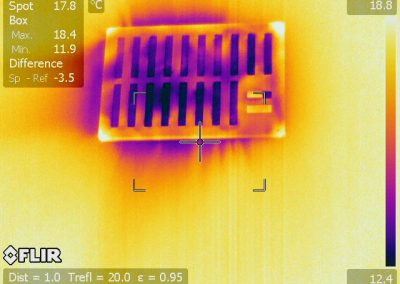
Thermal Image of drafts coming through room vent from outside
-
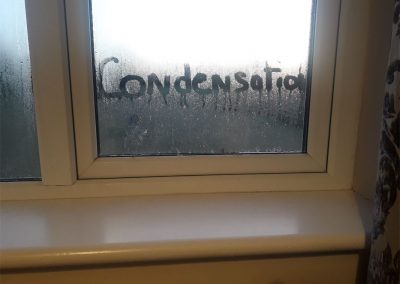
Condensation due to lack of ventilation
Find out where heat is escaping with a Heat Loss Home Inspection
Can Heat Recovery Ventilation systems be fitted in older homes?
Yes Heat Recovery Ventilation systems can be fitted in older homes but we would advise that insulation and especially air tightness is upgraded i.e. during whole house remodelling.
We can perform an airtightness test to see if Heat Recovery Ventilation is suitable for your home in order to achieve the full benefits of Heat Recovery Ventilation, otherwise you will not see a return on your investment
Can Heat Recovery Ventilation work with heat pumps and other heating systems?
Heat Recovery Ventilation will work with heat pumps and other heating systems
Their primary function is to ventilate airtight homes significantly reduce demand on the homes heating system and balance heat distribution throughout the home.
Homes built to the latest the nZEB – nearly Zero Energy Buildings standard & Irish Building Regulations 2019 part L & F with excellent attention to detail on Insulation and airtightness, Heat pumps are hardly calling for heat in the depts of winter and not at all at other times of the year
What is the difference between a Heat pump & Heat Recovery Ventilation?
Heat pumps work like Fridges but instead of cooling they are used to heat buildings while Heat Recovery Ventilation systems primary function is to ventilate airtight homes and in doing so recovers heat that would otherwise be lost to extract ventilation.
Can Heat Recovery Ventilation heat houses?
No Heat Recovery Ventilation systems primary function is to ventilate airtight homes and in doing so recovers heat that would otherwise be lost to extract ventilation
By recovering heat from extract air they significantly reduce demand on the homes heating system and balance heat distribution throughout the home.
We have experienced new homes with excellent attention to detail on Insulation and airtightness that heat pumps are hardly calling for heat in the depts. of winter and not at all at other times of the year as heat from house hold appliances, body heat and solar gain through triple glazed windows is enough to maintain thermal heating comfort levels
Reduce your heating costs by up to 70%.
Can Heat Recovery Ventilation cool houses?
Struggling to get to sleep on hot summer nights during a heat wave?
Yes the Heat Recovery Ventilation systems contributes to cooling homes during the summer this works by a summer bypass
Overheating due to global warming, increased levels of insulation, airtightness and solar gain through windows & glazing patio doors is becoming more frequent
Unlike air conditioning units which cools air by refrigerant technology recycling it back to the room consuming a lot of electricity.
The Heat Recovery Ventilation system works by bypassing the heat exchanger when the outside temperature is above 14 °C and the inside temperature is above 24 °C.
Such as in the evening & early night when people are going to bed and are struggling to sleep due to the heat but can’t leave the windows open due to security concerns and flying insects.
The advantage of Heat Recovery Ventilation is that windows can be shut at night, cool fresh air is drawn from outside and it is extremely economical to run.
The warm air is flushed out and cool fresh air is drawn from outside.
With “Push of a switch”, purge mode you can boost the unit to 100% purge mode for 2 hours after which the unit returns to normal mode and it runs at 20% during sleeping hours
Cool down house during hot summer nights
Can you boost the Heat Recovery Ventilation System to remove bad odours?
Boost switches are located in the kitchen, utility and outside toilets, bathrooms and ensuites.
With a “Push of a switch”, the Boost increases fan speed to the highest setting, increasing airflow on demand, and is ideal when large gatherings in the home require greater ventilation
Boost quickly improves indoor air quality in any room of the home where air suddenly becomes undesirable or contaminated from sources such as large social gatherings, cooking vapours, crowds, smoke and bad odours.
How much noise do Heat Recovery Ventilation System emit?
Heat recovery ventilation systems emit very little noise and will certainly not be heard above background noise such as a shower or fridge.
During sleeping hours the unit has is set back to very low speed that reduce noise to less than a quiet whisper.
What is the nZEB standard
The European Energy Performance of Buildings Directive requires all new buildings to be nearly Zero Energy Buildings (nZEB) it is a legal requirement under the EU and Irish Law. Click here for more information on nZEB.
What Our Customers Say
I have been a building contractor for the last thirty years. In that time I have seen a lot of change, these days both partners have to work when before one stayed at home to keep the home fires burning. Fuel was primarily coal and turf then and oil and gas were cheap.When I started out there was no emphasis on energy efficiency, heat pumps, underfloor heating, airtightness membranes and Heat Recovery Ventilation systems were unheard of. Mould was kept at bay by using heat to create a positive pressure to force condensation out through gaps in the building structure and it was hit and miss at the best of times.
With fuel getting more expensive buildings have become better insulated over the years, airtightness membranes have become standard in recent years but until recently ventilation was a after-thought. I have been increasingly asked by my clients why condensation and mould have become such an issue and in my experience it is due to, cold bridging, heat loss, increased airtightness and inadequate ventilation.
We have used Crossan Energy for both Thermal Imaging Home Heat Loss Inspections and installing Heat Recovery Ventilation systems their understanding of why you “build tight ventilate right” has helped us achieve and exceed our customer’s expectations.

